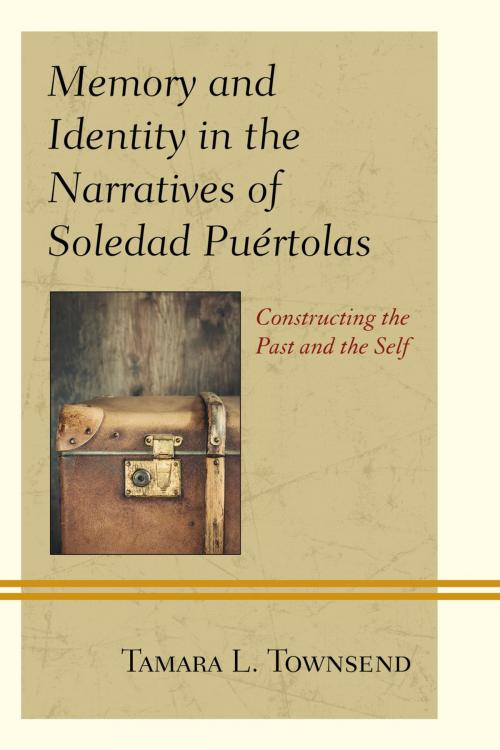Memory and Identity in the Narratives of Soledad Puértolas
Constructing the Past and the Self
Fiction & Literature, Literary Theory & Criticism, Women Authors, European| Author: | Tamara L. Townsend | ISBN: | 9781498500302 |
| Publisher: | Lexington Books | Publication: | September 9, 2014 |
| Imprint: | Lexington Books | Language: | English |
| Author: | Tamara L. Townsend |
| ISBN: | 9781498500302 |
| Publisher: | Lexington Books |
| Publication: | September 9, 2014 |
| Imprint: | Lexington Books |
| Language: | English |
Narratives of contemporary Spanish writer Soledad Puértolas (1947-), inducted into the Real Academia Española in 2010, depict the psychological struggles of the individual in postmodern democratic European society. Puértolas’s realist style emphasizes storytelling and character portrayal, and her urban middle-class characters seek satisfying interactions with others and a sense of purpose. Memory aids characters in their quest for meaning and identity, and their use of memory reveals their self-perception and outlook on life. This book maps four ways in which Puértolas’s narratives use memory to approach the fundamental problem of the individual’s search for purpose and identity.
Some characters are burdened by memory in certain texts, especially Días del Arenal (1992) and Burdeos (1986). Reflection upon a painful self-defining memory affects their present mood and behavior. For some, this burden causes them to withdraw or to act irresponsibly; others accept and overcome the scars of the past. A second type of character takes an escapist approach to memory, as seen in Queda la noche (1989).Their nostalgic retreat indicates a restless dissatisfaction with the present. In a third type of memory, a secondary character provides the organizing force behind a protagonist’s reminiscences, often an extroverted foil to highlight the protagonist’s introspective nature. Memory of the relationship motivates the protagonist to mentally order his or her own life through the life review process; Una vida inesperada (1997) and La señora Berg (1998) provide examples. Finally, in the amnesic mode, Puértolas departs from realism to experiment with different forms of amnesia, as in La rosa de plata (1999) and Si al atardecer llegara el mensajero (1995). Memory loss highlights the centrality of memory to personhood and identity, while at the same time it draws attention to the inadequacy of memory to explain the totality of existence.
Narratives of contemporary Spanish writer Soledad Puértolas (1947-), inducted into the Real Academia Española in 2010, depict the psychological struggles of the individual in postmodern democratic European society. Puértolas’s realist style emphasizes storytelling and character portrayal, and her urban middle-class characters seek satisfying interactions with others and a sense of purpose. Memory aids characters in their quest for meaning and identity, and their use of memory reveals their self-perception and outlook on life. This book maps four ways in which Puértolas’s narratives use memory to approach the fundamental problem of the individual’s search for purpose and identity.
Some characters are burdened by memory in certain texts, especially Días del Arenal (1992) and Burdeos (1986). Reflection upon a painful self-defining memory affects their present mood and behavior. For some, this burden causes them to withdraw or to act irresponsibly; others accept and overcome the scars of the past. A second type of character takes an escapist approach to memory, as seen in Queda la noche (1989).Their nostalgic retreat indicates a restless dissatisfaction with the present. In a third type of memory, a secondary character provides the organizing force behind a protagonist’s reminiscences, often an extroverted foil to highlight the protagonist’s introspective nature. Memory of the relationship motivates the protagonist to mentally order his or her own life through the life review process; Una vida inesperada (1997) and La señora Berg (1998) provide examples. Finally, in the amnesic mode, Puértolas departs from realism to experiment with different forms of amnesia, as in La rosa de plata (1999) and Si al atardecer llegara el mensajero (1995). Memory loss highlights the centrality of memory to personhood and identity, while at the same time it draws attention to the inadequacy of memory to explain the totality of existence.















